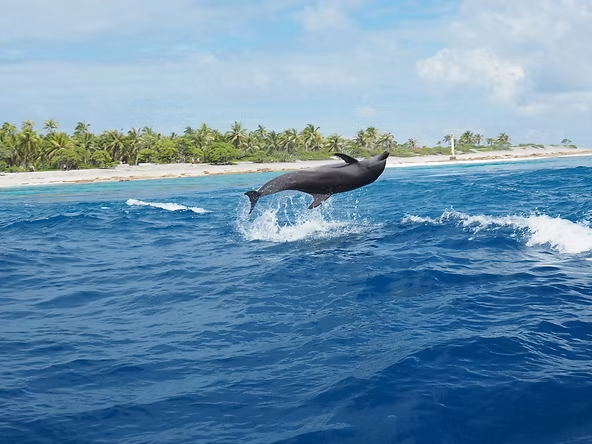Dolphins Around the World
Dolphins are found across the globe in diverse environments. There are 36 species of marine dolphins, living in oceans, coastal waters, estuaries, and even freshwater. These adaptable mammals thrive in temperatures from below 0°C to over 30°C. In Britain, bottlenose dolphins are most common along west Wales and eastern Scotland, with pods also seen off Devon and Cornwall. Scotland is especially notable, as it is home to the world’s most northerly pod of bottlenose dolphins.
Freshwater Dolphins
Not all dolphins live in the sea. The Amazon River hosts four species of river dolphin, found nowhere else on Earth. These unique freshwater dolphins are specially adapted to their environment and are a symbol of the Amazon’s biodiversity.
Threats from Noise Pollution
Underwater noise pollution poses a serious risk to dolphin survival. Around the British Isles, marine traffic is among the busiest in the world. Naval activity, oil and gas exploration, seismic surveys, and construction all create intense underwater noise. This disrupts dolphins’ ability to communicate, reproduce, navigate, and hunt. In severe cases, it can even be fatal.
Incredible Dolphin Abilities
Speed and Movement
Although bottlenose dolphins usually swim at a gentle pace of around 2 mph, they can sprint at speeds exceeding 30 mph for short bursts. This agility makes them some of the ocean’s fastest marine mammals when needed.
Unique Eating Habits
Dolphins swallow fish headfirst to avoid getting caught by spines. This efficient feeding method ensures smooth swallowing and prevents injury.
Creative Hunting Strategies
- Bubble nets: Dolphins blow bubbles to herd prey toward the surface.
- Fish-whacking: Using their powerful tails, dolphins stun fish to make them easier to catch.
Communication Skills
Dolphins are among the most vocal animals. They produce whistles, clicks, squeaks, moans, barks, and even yelps. These sounds help them communicate within their pods, navigate, and locate prey.
Dolphin Intelligence
Bottlenose dolphins demonstrate remarkable intelligence, comparable in some ways to humans and apes. They can recognize themselves in mirrors, showing self-awareness. In Western Australia, dolphins use marine sponges as tools to protect their beaks when foraging on rocky seabeds—an extraordinary example of problem-solving in the wild.
Unique Sleep Patterns
Unlike humans, dolphins rest by shutting down one half of their brain at a time. While half the brain sleeps, the other stays alert with one eye open. This adaptation allows dolphins to remain aware of predators and keep their pods together while resting.
Human Threats from Fishing Gear
Fishing gear remains one of the greatest dangers to dolphins. Bottlenose dolphins are often caught accidentally in nets and long-lines, leading to injury or death. In UK waters, bycatch is a pressing issue. To combat this, organizations such as WWF are promoting sustainable fishing gear. Solutions like attaching acoustic devices known as “pingers” to nets help dolphins detect and avoid them, reducing accidental captures.

